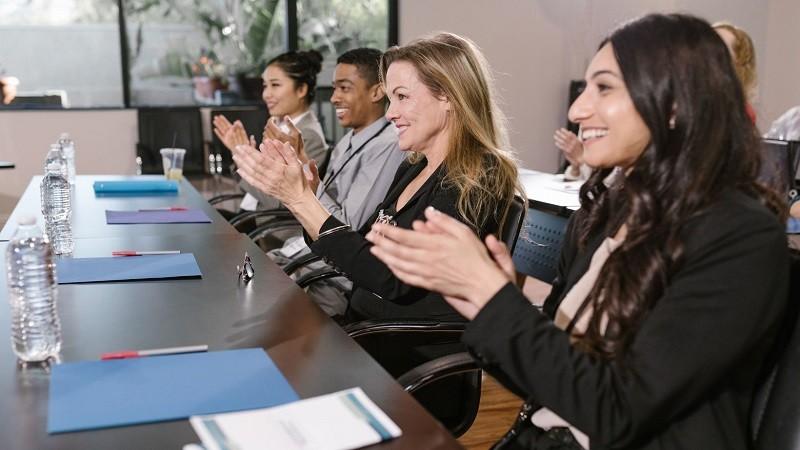The Gamification Summit is a global gathering of thought leaders, designers, educators, entrepreneurs, and marketers who believe in using the power of game mechanics to solve real-world problems. It’s a fast-growing space, and with each passing year, the summit draws more international attention.
A key component of the summit’s success lies in how tickets are sold. A typical event might use a generic sales page, but the Gamification Summit demands something more: a site that mirrors the summit’s values of interactivity, reward, and engagement. This article will explore, in detail, how to build a ticketing site that not only sells tickets—but delights users along the way.
1. Know Your Audience
1.1 Who They Are
Gamification Summit attendees include professionals from diverse sectors: education, health, technology, HR, and marketing. Many are UX designers, product managers, business owners, or academics researching behavioral science. They’re curious, analytical, and motivated by systems that reward engagement.
1.2 What They Expect
These individuals don’t just want a ticket—they want an experience. From the moment they land on the site, they expect to feel immersed in a world that mirrors the principles they advocate: feedback loops, goal-setting, progression, and achievement.
2. Core Features of the Ticketing Platform
2.1 Simple, Responsive UX
The ticketing site must offer a frictionless journey:
- Mobile-first design
- Clean navigation
- One-click checkout for returning users
- Accessibility compliance for users with disabilities
2.2 Secure Payments
Security is non-negotiable. Implement:
- SSL encryption
- Verified payment gateways
- Real-time fraud checks
- Transparent refund/cancellation policies
2.3 Multiple Payment Options
Offering flexibility builds trust and accessibility:
- Credit/debit card
- Mobile wallets
- Bank transfer
- Local currency conversion for international buyers
3. Gamifying the Ticket Purchase Process
3.1 Badge & Progression Systems
Introduce tiered achievement levels:
- “Explorer”: Registers interest or joins a waitlist
- “Pioneer”: Buys a ticket early
- “Champion”: Refers three or more friends
- “VIP Architect”: Purchases group packages or higher-tier tickets
Each badge unlocks new rewards or digital recognition.
3.2 Leaderboards and Social Proof
Encourage referrals and sharing by showing:
- Top referrers of the week
- Total number of badges collected globally
- User reviews with reactions or emojis
This creates a sense of momentum, especially for early ticket sales.
3.3 Mystery Unlocks
Introduce “Easter eggs”:
- Visitors who spend more than 3 minutes on the FAQ page unlock a small discount code
- Users who share on social media get surprise upgrades
- Returning visitors after 24 hours get a bonus coupon
This mechanic turns browsing into discovery.
4. Pricing and Tier Strategy
4.1 Early Bird Incentives
Create 3–4 pricing tiers:
- Super Early Bird (first 100 tickets)
- Early Bird (until a fixed date)
- Regular
- Last Call (final 2 weeks)
Each tier is clearly marked on the ticket page, with countdowns for urgency.
4.2 Group Discounts
Offer price incentives for bulk purchases:
- 10% off for 3+
- 15% off for 5+
- 20% off for 10+
Automatically apply at checkout, and promote with team-building messaging.
4.3 Premium & Add-ons
Offer upsells like:
- VIP meet-and-greet
- Private Q&A sessions with speakers
- Exclusive merchandise
- Access to post-event recordings
These should be optional but attractive.
5. Site Content Strategy
5.1 Speaker Highlights
Create short, compelling speaker bios with video teasers or quotes. Use interactive cards that flip or animate on hover. Tag them by topic (e.g., Education, Product Design, Health Behavior).
5.2 Session Previews
Offer brief descriptions of sessions with “gamified previews,” such as:
- Unlock more details by registering interest
- Vote on topics you’re excited about
This helps with pre-event content planning and boosts user participation.
5.3 Interactive FAQ
Transform FAQs into clickable dropdowns with emoji ratings. Let users vote on which answers were helpful. This increases engagement and improves clarity.
6. Event Countdown & Scarcity Elements
6.1 Live Countdown Timer
Prominently display a timer counting down to:
- End of Early Bird pricing
- Start of the event
- Specific announcement dates
This builds anticipation and encourages action.
6.2 Ticket Availability
Show real-time ticket stats:
- “Only 8 VIP tickets remaining”
- “Standard tickets 85% sold”
This triggers the scarcity effect—a key gamification tool.
7. Post-Purchase Experience
7.1 Personalized Confirmation Pages
Upon purchase, deliver a custom message:
“Congratulations! You’ve earned the Pioneer Badge. Check your inbox for your digital ticket and prepare for an experience like no other.”
Include options to:
- Add to calendar
- Download mobile ticket
- Share your attendance on social media
7.2 Onboarding Emails
Send a 3-part email series:
- Welcome and important dates
- Speaker spotlights and venue tips
- What to bring and app download links
These should reflect gamified language and visuals—making even logistics feel exciting.
7.3 Community Access
Invite attendees to join:
- A private online group (Slack, Discord, or forum)
- Pre-event challenges
- Meetups and pre-conference networking
This builds community and maintains momentum.
8. Admin and Backend Essentials
8.1 Real-time Dashboard
Your backend should let you track:
- Ticket sales per tier
- Referral traffic
- Most engaged users
- Revenue by region or payment type
This data helps adjust pricing, campaigns, and session planning.
8.2 Attendee Management Tools
Admins should be able to:
- Reissue tickets
- Change attendee names
- Export attendee lists
- Flag VIPs and speakers
8.3 CRM Integration
Link your ticketing system to your marketing tools so:
- Email lists auto-populate
- Personalization tags work (e.g., first name, ticket type)
- Behavioral triggers can launch (e.g., cart abandonment)
9. Promotions and Campaigns
9.1 Gamified Referral Campaign
Offer:
- 10% off for each successful referral
- A free ticket for 5 referrals
- Access to VIP lounge for top 10 referrers
Use unique referral codes and real-time leaderboards to boost competition.
9.2 Social Media Contests
Host challenges like:
- “Show us your game-themed workspace”
- “Design your own badge and win swag”
- “Post your favorite game mechanic with #GamifySummit”
Winners could receive upgrades or public recognition on-site.
9.3 Flash Sales
Run short bursts of discounts during peak times:
- “Power Hour Sale”
- “Golden Ticket Weekend”
- “50% Off Mystery Tickets – Only 20 Available”
These work best with countdown timers and push notifications.
10. Offline and Hybrid Ticket Sales
10.1 Local Sales
Collaborate with co-working spaces, universities, or innovation hubs to sell printed tickets or offer QR code registration stations.
10.2 On-site Sales
Have a mobile-friendly POS setup for last-minute buyers at the venue. Ensure smooth syncing with online sales.
10.3 Hybrid Access Options
Provide clear information on:
- In-person vs. virtual tickets
- Live streaming schedule
- Access to digital recordings post-event
This boosts inclusivity and international reach.
11. Post-Event Strategy
11.1 Feedback Loops
Use gamified surveys:
- Reward completion with a badge or small discount for next year
- Let users rate sessions with emojis
- Display aggregated results live
11.2 Certificate of Attendance
Generate downloadable, shareable certificates with:
- Custom attendee name
- Sessions attended
- Digital badges earned
These encourage LinkedIn sharing and add to attendees’ professional value.
11.3 Loyalty Rewards
Build momentum for future events:
- Early access for previous attendees
- “Alumni Badge” for repeat buyers
- Discount for filling out full post-event survey
Conclusion
A ticket sale site for the Gamification Summit should be more than functional—it should be an experience. From the first click to post-event community engagement, the entire journey must reflect the power of gamification.
Whether through leaderboards, countdown timers, surprise unlocks, or achievement badges, your site should feel alive. This not only sells more tickets—it creates a sense of belonging, excitement, and momentum. For an event that champions engagement, learning, and transformation, your ticket platform should do the same.

